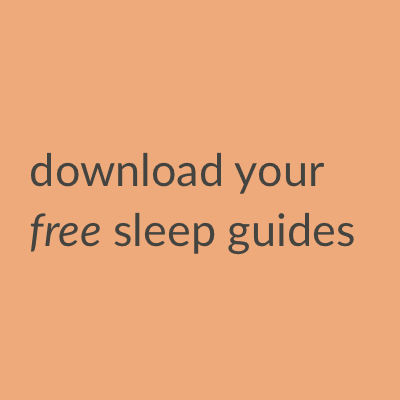A newborn’s sleep is disorganized in the first 8 weeks (adjust for expected due date), and this can be a source of uncertainty and anxiety in new parents.
Often, a baby’s sense of night and day isn’t established yet and newborns will sleep at anytime throughout the day or night with their longest sleep happening most often during the day. While in the womb, your baby did not experience light and now that they are in the “outside” world, your baby’s sleep mechanisms are slowly starting to function.
Sign Up For Our Newsletter
Your baby’s sleep in the first two months will really only offer you a pattern or irregularity with sleep times ranging anywhere from 30 minutes to four hours. The time between sleep can range from 45-60 minutes, and wake time is typically taken up with feeding, changing and hanging out.

What You Should Know
16 to 18 irregular hours is the average, total amount of time a normal, full-term baby sleeps throughout the day. The longest sleep period lasts 2.5 – 4 hours and most newborn’s sleep is REM or dream sleep which is easily disturbed.
One sleep cycle for a newborn lasts about 50 – 60 minutes and his/her sleep period may only consist of one or two cycles, or one to two hours. Short, easily disrupted sleep periods may be protective for SIDS during the time when your baby is most at risk for SIDS – their first four months. Practice safe sleep to reduce the risk of Sudden Infant Death Syndrome (SIDS).
What to do: To aid in the development of your baby’s internal sleep mechanisms, it is a good idea to expose him/her to regular light, especially in the morning, and typical household noises during the day. This helps their bodies become accustomed to normal wake time along with its daytime rhythms.
What not to do: It is a myth that putting your newborn on a schedule will promote better sleep at night. Let them sleep when they want and do not try to implement a sleep schedule. The goal is to keep your newborn and you rested!
Your baby’s sleep in the first two months will slowly give way to night sleep beginning to lengthen and day and night confusion will decrease. Do not try to create a routine, as your baby’s sleep mechanisms aren’t mature enough yet for a routine to have an impact.
What Is PURPLE Crying?
PURPLE Crying is an important, normal developmental phase that all babies experience, although there isn’t a clear reason why. The time of day that is most likely to occur is referred to as the “witching hour”. Unfortunately, it usually lasts more than an hour. Let’s break it down.
Period: It lasts for a predictable period of time. This normal behaviour begins about 2 weeks of age, continues until baby is 12 – 16 weeks and usually occurs between late afternoon and early evening.
PURPLE is an acronym which stands for:
P: Peak of Crying. The baby will cry more and more each week, peaking at about 8 weeks of age.
U: Unexpected. The crying will come and go and has no apparent cause.
R: Resists Soothing. The baby may not stop crying regardless of what you do to try to console him/her.
P: Pain Expressions. The baby’s body language and facial expressions make it seem as though they are in pain even if they are not.
L: Long Lasting. The crying can last 5 or more hours a day.
E: Evening. The crying may increase in the late afternoon or evening (“witching hour”)
Remember: All babies go through the phase with varying amounts of crying. Some babies won’t cry very much and others will cry far more. It is a normal developmental phase and regardless of what you do or do not do they will continue to cry. Do whatever you need to do to keep both of you rested and do not worry about how you soothe your baby. Rocking, swaying, nursing, etc. are all part of the repertoire. You can’t spoil your baby.
What to do: GET SUPPORT. All parents want their baby to be happy and content and it can be very difficult to cope with a baby who’s constantly crying and doesn’t stop no matter what you do. Ask friends and family for their help and take a break. Ask family or friends to give you some time – especially around 8 weeks when the crying peaks. It can be very difficult emotionally to cope when you are tired and alone. Research shows that it is during this period that baby’s are most vulnerable to shaken baby syndrome.
You Are All Learning
Many new parents are surprised that there is more to learn about babies and sleep than they thought! Just remember that there are so many new experiences happening and to take your time adjusting to life with a new baby. The Good Night Sleep Site team is always available to help and you can reach out to use at any time by booking a complimentary 15 minute consultation or ask a question in the Good Night Sleep Site Facebook Group. We know it seems overwhelming now, but we promise it will get better – hang in there!
Written by Good Night Sleep Site Consultant.
Good Night Sleep Site provides free child and family sleep support through Facebook, Twitter, and Instagram. We invite you to join our sleep community as we work towards Good Night Sleep Site’s mission of a healthier rested family unit. For more sleep tips, subscribe to our newsletter and visit Good Night Sleep Site.






